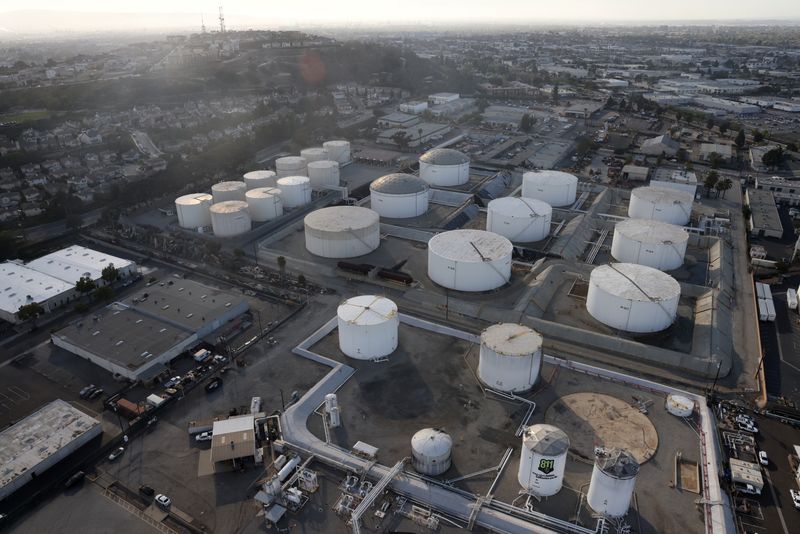By Emily Chow
BEIJING (Reuters) – Oil prices rose over $1 on Wednesday, bouncing back after earlier declines, as Russia’s invasion of Ukraine continues to stoke volatile trading with ceasefire talks the latest market trigger.
Brent futures were up 97 cents, or 1%, at $100.88 a barrel at 0503 GMT.
U.S. West Texas Intermediate (WTI) crude rose 45 cents, or 0.5%, at $96.89 a barrel. Both contracts had earlier declined more than $1 a barrel, with Brent falling to $98.86 a barrel and WTI easing to $94.90 a barrel earlier in the session.
Ukrainian President Volodymyr Zelenskiy said in a video address released early on Wednesday that the positions of Ukraine and Russia at peace talks were sounding more realistic, but more time was needed.
“Traders are awaiting more clues from ceasefire talks after a two-day selloff in the oil markets, but the crude prices may continue being under pressure as high inflation will eventually drag on economic growth and weakens demands,” said Tina Teng, an analyst at CMC Markets.
A strong U.S. dollar is a key element exerting pressure on oil prices and investors expect the U.S. Federal Reserve to adopt a more hawkish monetary policy to curb flaring inflation, she said.
Analysts expect the Fed to raise its benchmark overnight interest rate by a quarter of a percentage point at the end of its two-day policy meeting on Wednesday to address soaring inflation. A rise in interest rates would strengthen the U.S. dollar and dampen oil demand, as a stronger greenback makes it more expensive for those holding other currencies.
Oil had settled below $100 on Tuesday, the first time since late February. Trading sessions have been volatile since Russia’s invasion of Ukraine on Feb. 24, with prices hitting 14-year highs on March 7, but since then Brent has fallen nearly $40 a barrel and WTI about $34.
Prices had also come under pressure this week over concerns of slowing China demand, as the world’s most populous country and second-largest oil consumer imposes stringent measures to contain the spread of the COVID-19 Omicron variant.
New domestically transmitted cases in China, however, fell by nearly half on March 15 compared with the previous day, the country’s national health commission reported on Wednesday.
Lockdown in parts of China could unlock if omicron cases remain mild, said Stephen Innes, managing partner at SPI Asset Management.
“Covid risks do fade fast especially with the population highly vaccinated.”
Meanwhile, preliminary data from the American Petroleum Institute showed U.S. crude inventories rose by 3.8 million barrels for the week ended March 11, while gasoline inventories fell by 3.8 million barrels and distillate stocks rose by 888,000 barrels, according to sources, who spoke on condition of anonymity.
Official U.S. government inventory data is due on Wednesday.
The Organization of the Petroleum Exporting Countries said on Tuesday that oil demand in 2022 faced challenges from Russia’s invasion of Ukraine and rising inflation as crude prices soar, increasing the likelihood of reductions to its forecast for robust demand this year.
Source : Reuters


